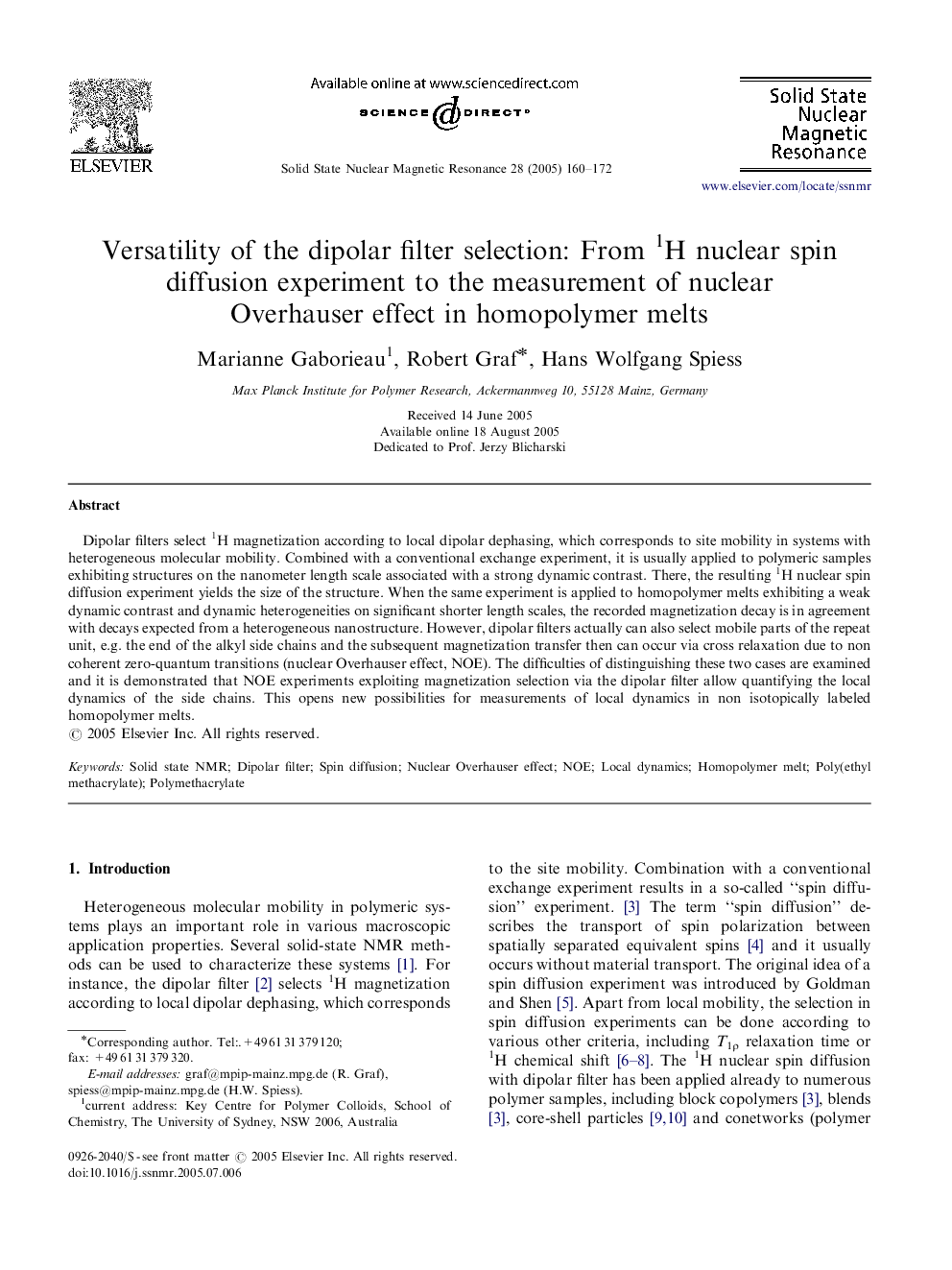| Article ID | Journal | Published Year | Pages | File Type |
|---|---|---|---|---|
| 9594196 | Solid State Nuclear Magnetic Resonance | 2005 | 13 Pages |
Abstract
Dipolar filters select 1H magnetization according to local dipolar dephasing, which corresponds to site mobility in systems with heterogeneous molecular mobility. Combined with a conventional exchange experiment, it is usually applied to polymeric samples exhibiting structures on the nanometer length scale associated with a strong dynamic contrast. There, the resulting 1H nuclear spin diffusion experiment yields the size of the structure. When the same experiment is applied to homopolymer melts exhibiting a weak dynamic contrast and dynamic heterogeneities on significant shorter length scales, the recorded magnetization decay is in agreement with decays expected from a heterogeneous nanostructure. However, dipolar filters actually can also select mobile parts of the repeat unit, e.g. the end of the alkyl side chains and the subsequent magnetization transfer then can occur via cross relaxation due to non coherent zero-quantum transitions (nuclear Overhauser effect, NOE). The difficulties of distinguishing these two cases are examined and it is demonstrated that NOE experiments exploiting magnetization selection via the dipolar filter allow quantifying the local dynamics of the side chains. This opens new possibilities for measurements of local dynamics in non isotopically labeled homopolymer melts.
Keywords
Related Topics
Physical Sciences and Engineering
Chemistry
Physical and Theoretical Chemistry
Authors
Marianne Gaborieau, Robert Graf, Hans Wolfgang Spiess,
